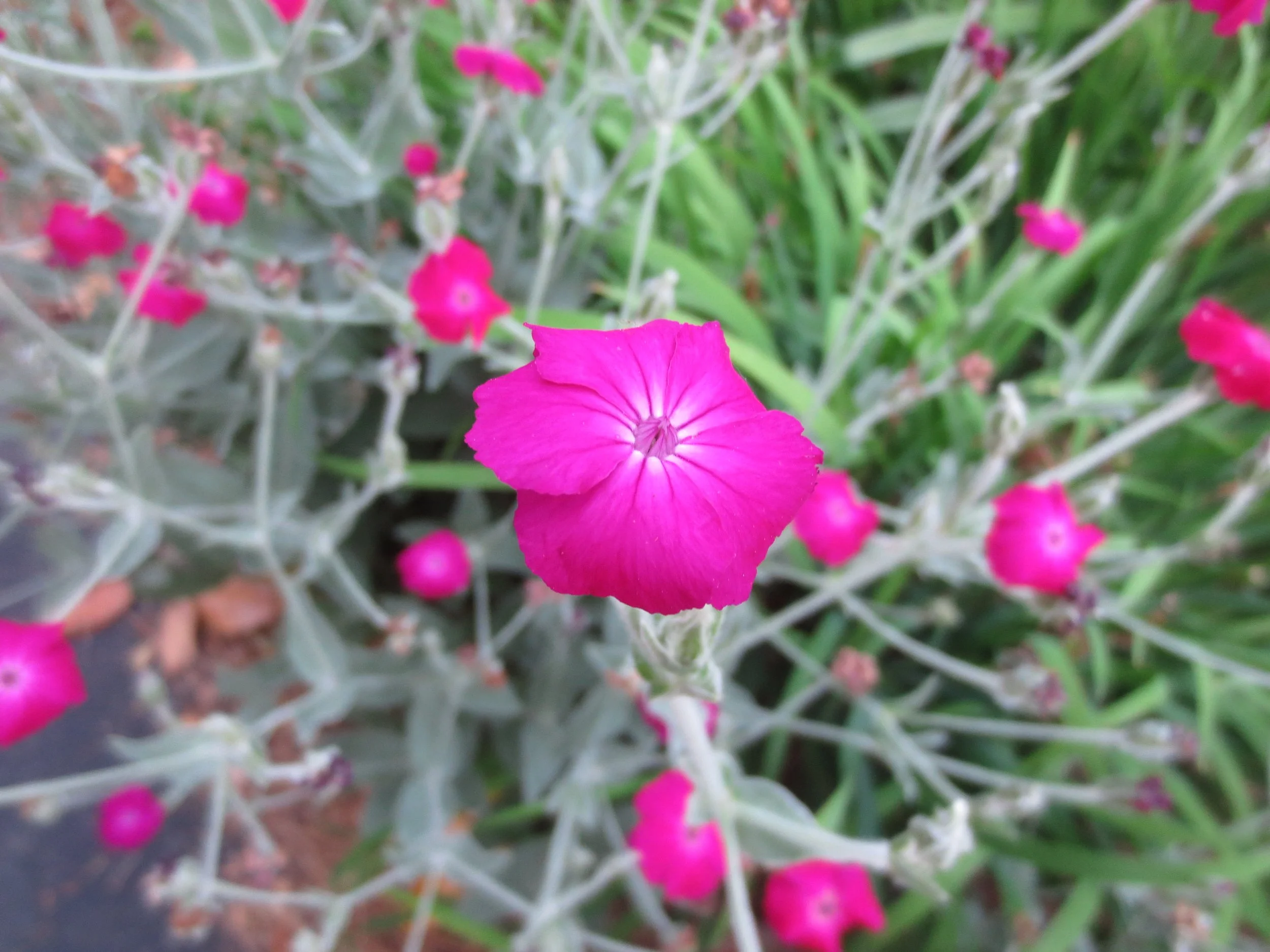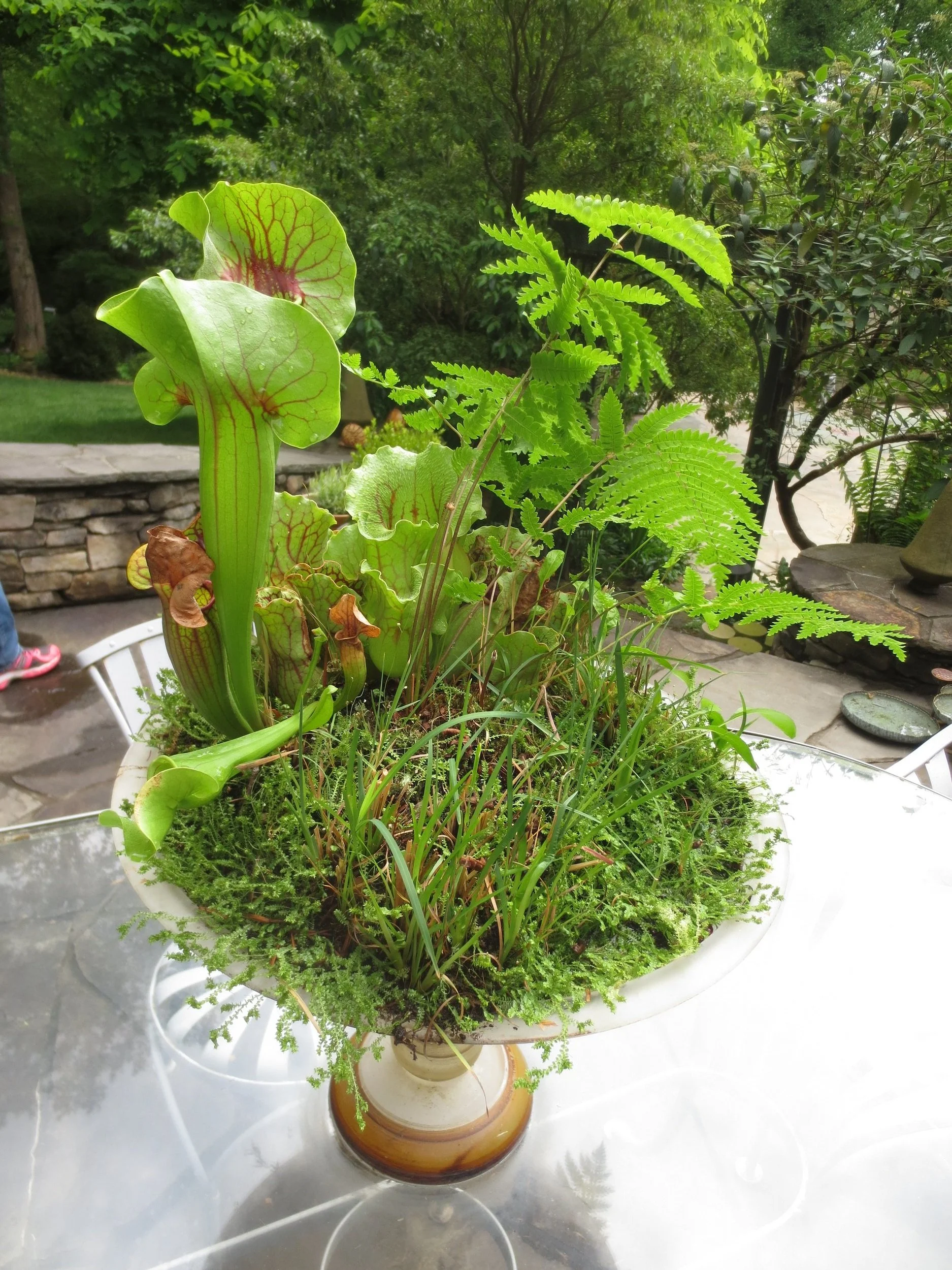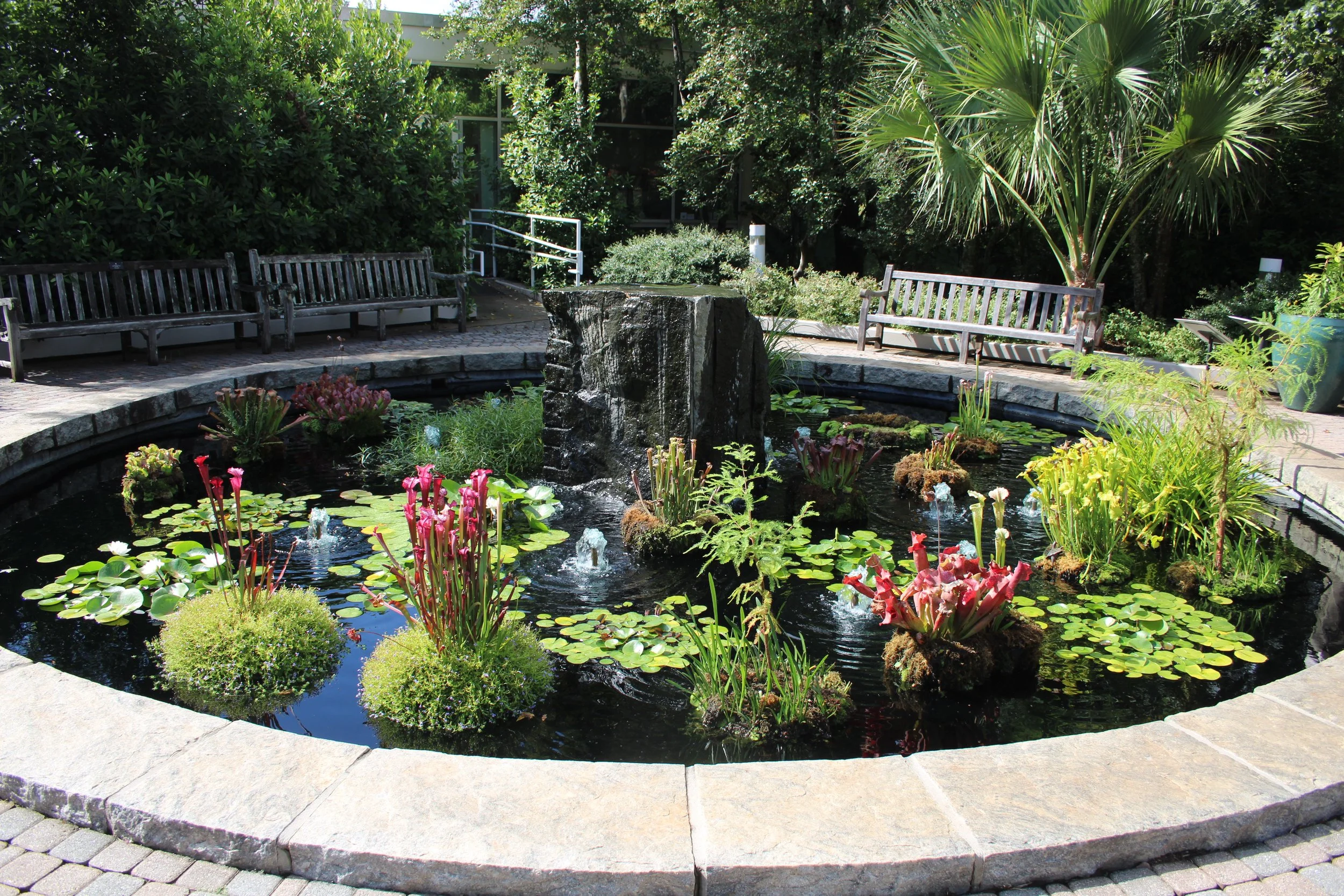Carnivorous plants, especially Pitcher Plants, have long intrigued me. I felt lucky when a local Master Gardener offered to share. (Thanks, Dustan). Thus started the research -- I did not want to kill this plant. What an education! Everything that I know about other plants simply did not apply. I found one website particularly helpful, although the author was somewhat gleeful in his predictions of failure.
Here is a summary of what I learned, in no particular order:
Pitcher Plants are in the Sarracenia (pronounced sair-ah-SEEN-ee-ah) family. Other carnivorous plants include the Sundews (Drosera), Venus Flytraps (Dionaea muscipula), and the rather vulgar-looking Monkey Cups (Nepenthes).
Pitcher Plants can be found in the wild, growing in sunny bogs. This gives the gardener a checklist of their requirements: full sun to mostly sun, and plentiful moisture. Pitcher Plants are endangered or threatened and should never be harvested from the wild. Responsible nature photographers will not reveal the locations of their photos, to avoid illegal gathering.
Moisture needs are specific. Water, lots of it, either rainwater or distilled water. The chlorinated water that comes from our faucets or artificially softened water will kill the plant.
Plants should not be fertilized and should never be given treat insects or other food. Let Mother Nature handle the menu. Pitcher Plants cannot digest fats. Gardeners should never offer them bits of hamburger or other meats.
Pitcher Plant leaves are a hollow tube (the pitcher) with a flap-like lid at the top. The flap has bright veins to attract insects, glands that secrete a sweet, sticky fluid, and downward facing internal hairs to prevent insects from leaving once they are inside the tube. The walls of the tube are smooth, so once the insect has been lured inside for a sweet treat, it falls into the lower pitcher, drowns in digestive enzyme-infused rainwater, and is transformed into a meal. The bottommost portion of the tube is a tiny receptacle for leftover, undigestible insect parts.
Plants go dormant in winter. Gardeners should allow their dead leaves to remain in place until spring before trimming them back to the rosette base with scissors. Blooms are odd looking umbrellas held upside down on wiry stems. The spent flowers take all season to mature into seed pods. Ripe seeds can be sprouted after a period of cold stratification.
Leaf colors may be chartreuse, rose, pink, or copper, and have delicate lines that resembles varicose veins.
Pitcher Plants can be grown as houseplants, outdoors, or in containers. Keep their moisture requirements in mind. They need damp air and soil, even during winter dormancy.
They have some of the strangest common names I have encountered: Sidesaddle Plant, Indian Dipper, Whippoorwill Boots, Huntsman's Cup, Dumb Watch, Frog's Britches.
A fellow gardener who has been successful with Pitcher Plants recommends a mixture of perlite or sand combined with peatmoss as a growing media. Use natural sand from a creek bed. Builder’s sand or playground sand may have been chemically treated to reduce future weeds.
Pitcher Plants grow up to three feet tall and up to two feet wide. They are native to the eastern United States and are cold hardy in zones 6a-8b.
If carnivorous plants are your interest but you are new to them, visit https://sarracenia.com/faq.html as a valuable resource.
Pitcher plants are beautiful in an outdoor tabletop arrangement, but require dedication to water needs.
This image is from a display garden of University of Georgia, taken several years ago. It is what created my interest in growing these unusual plants.




